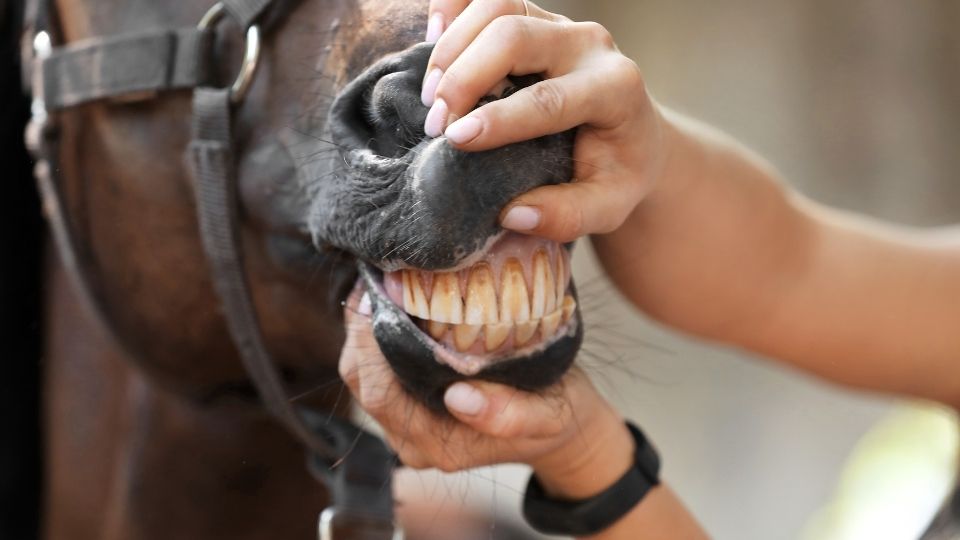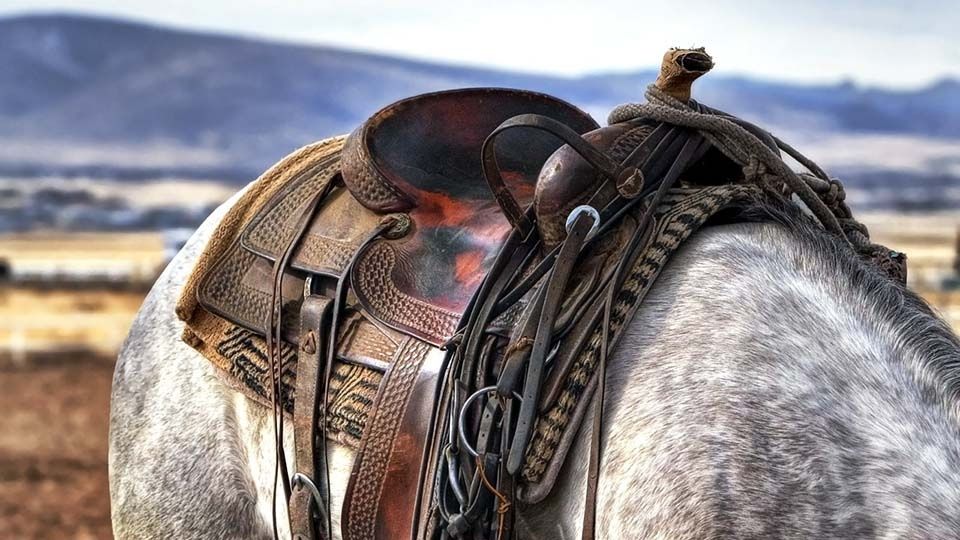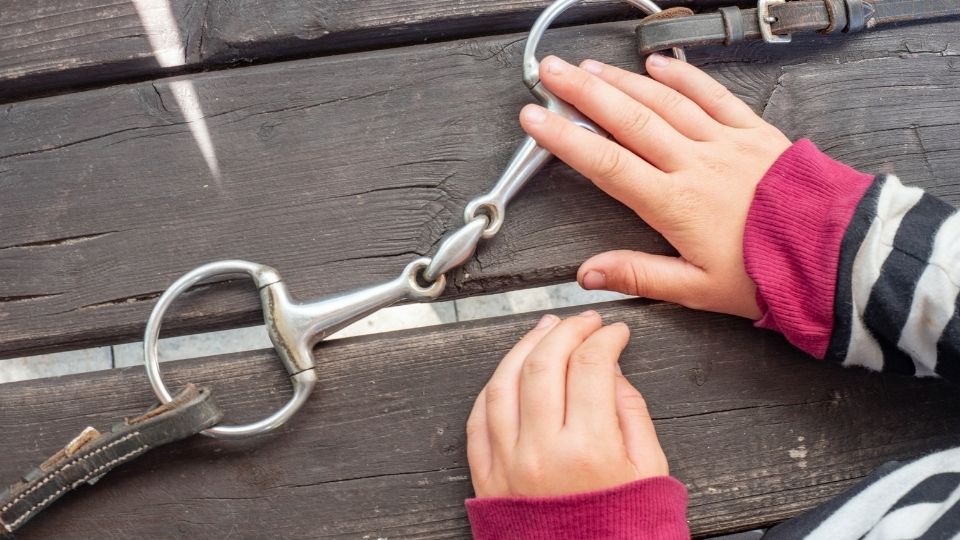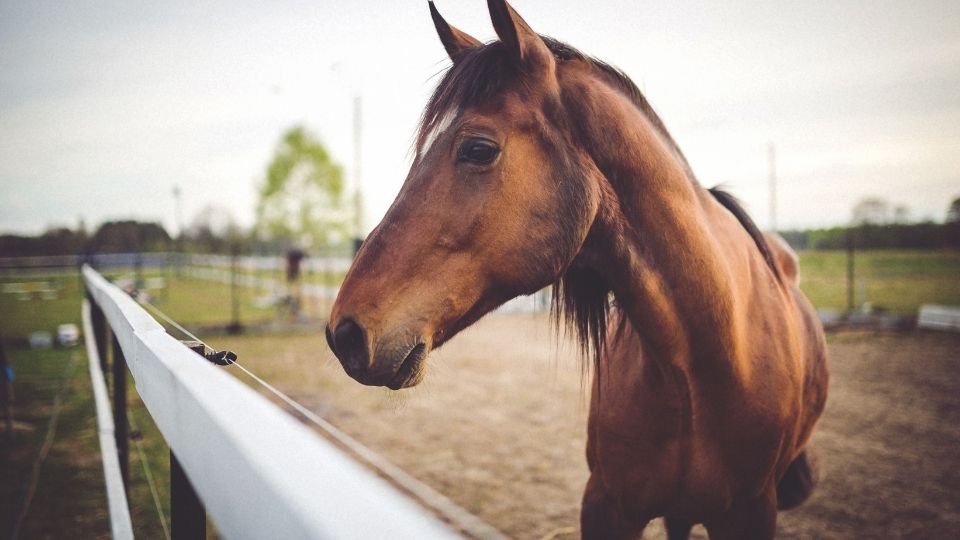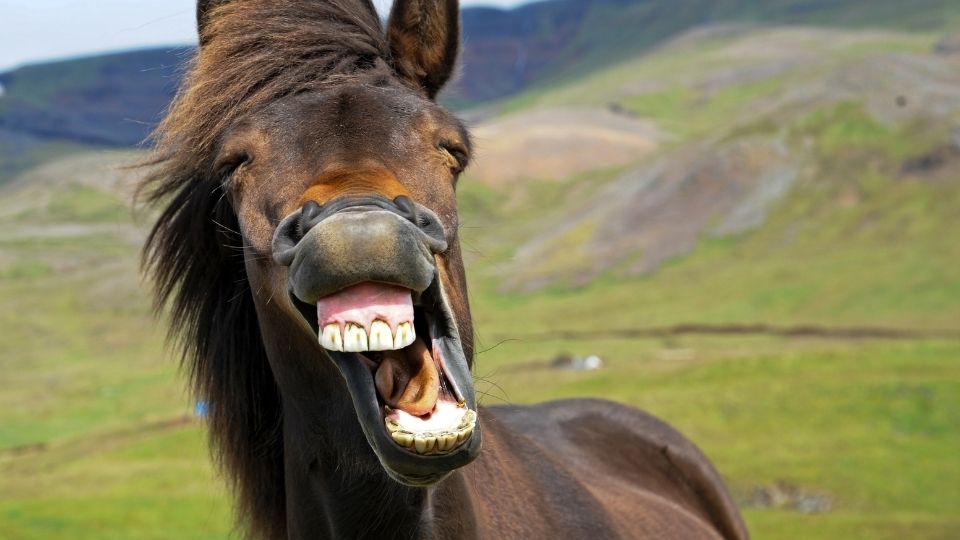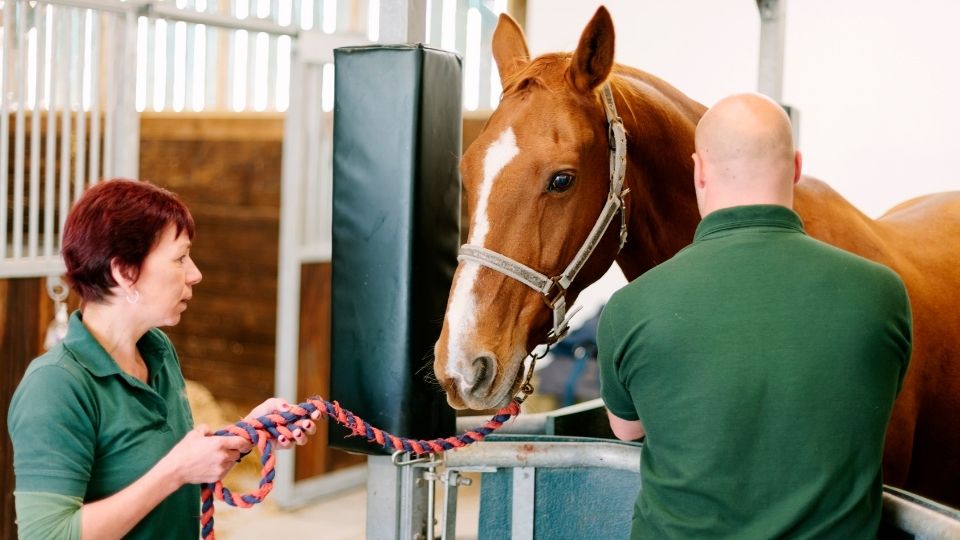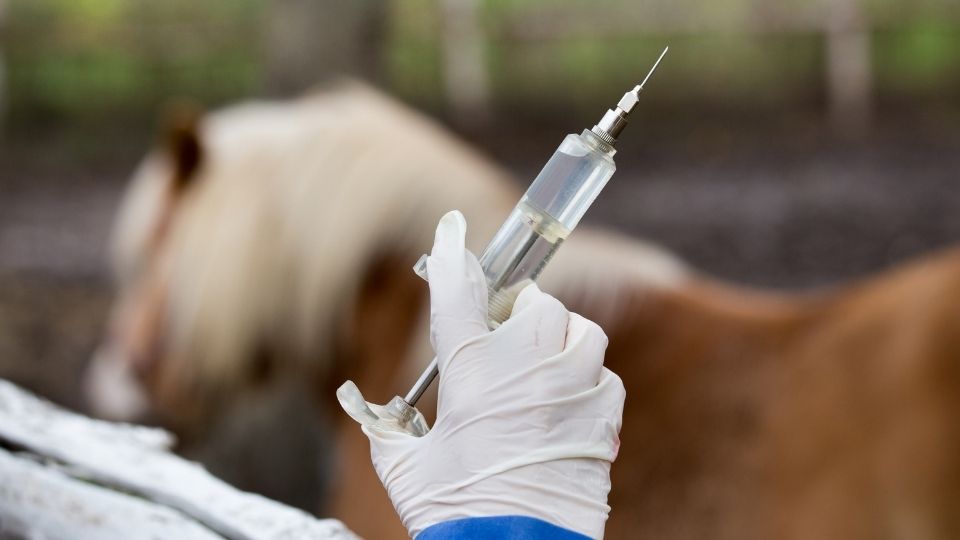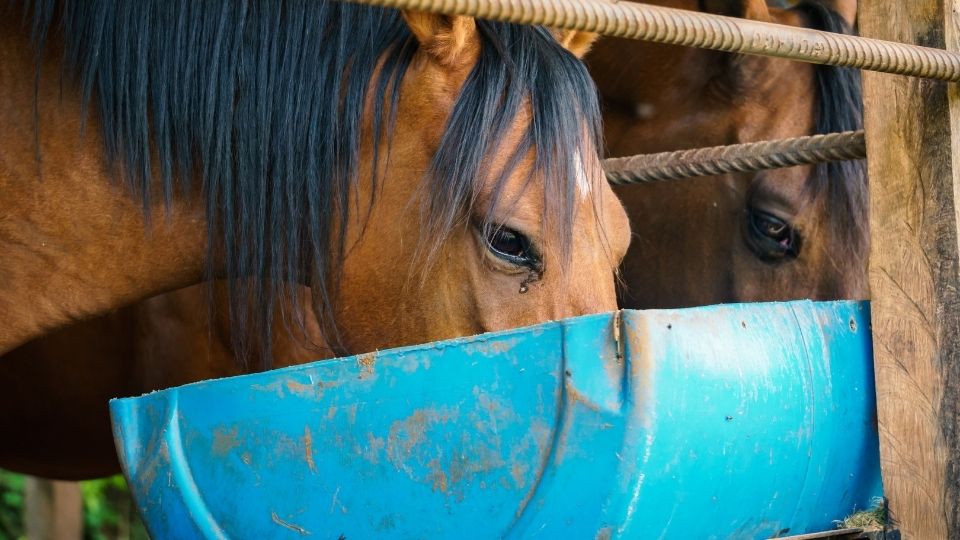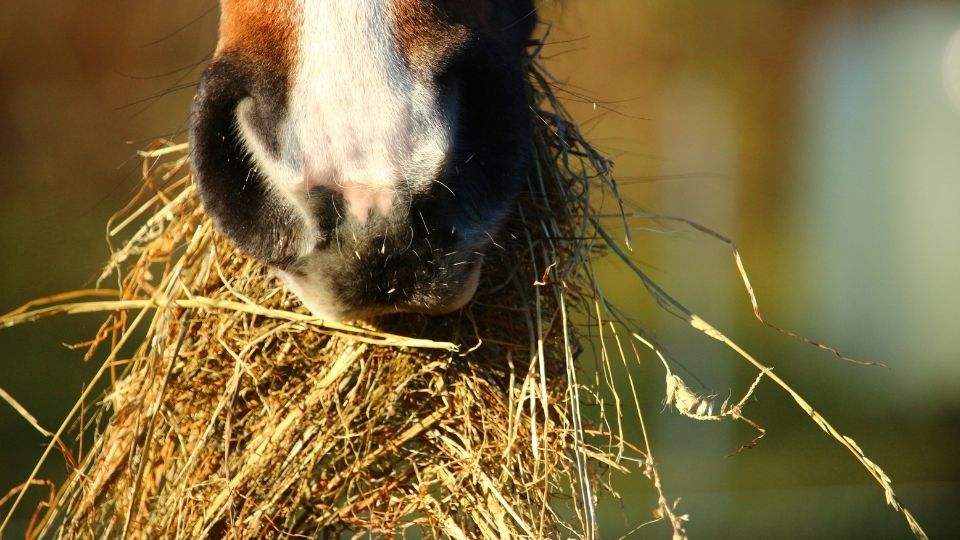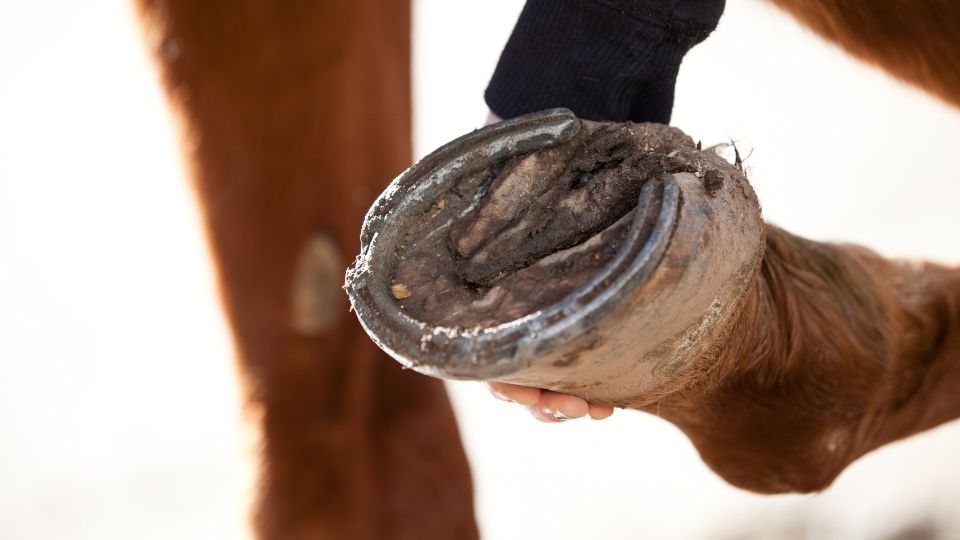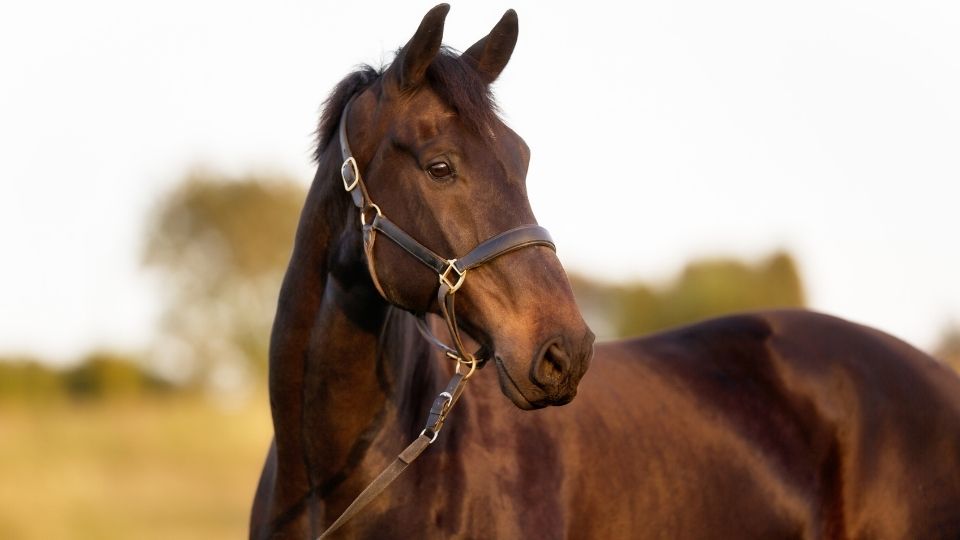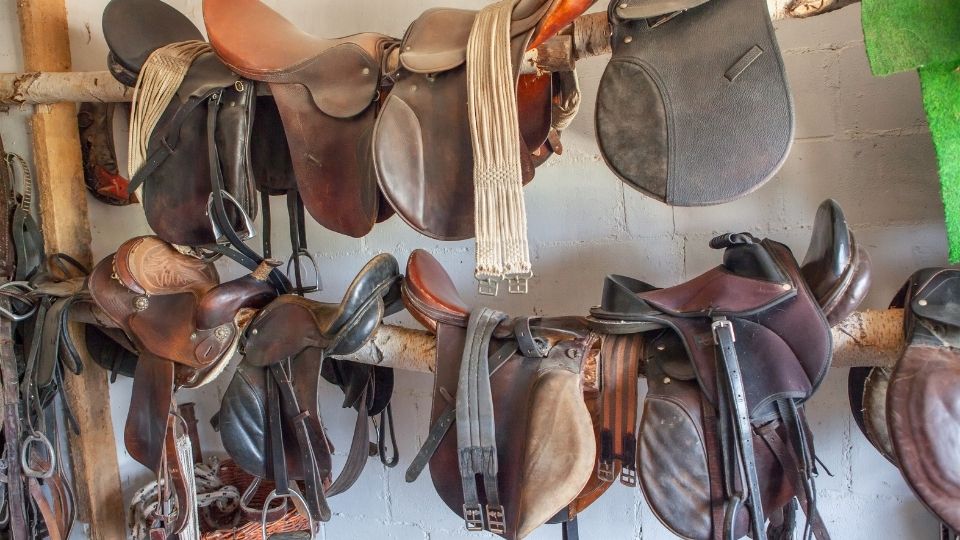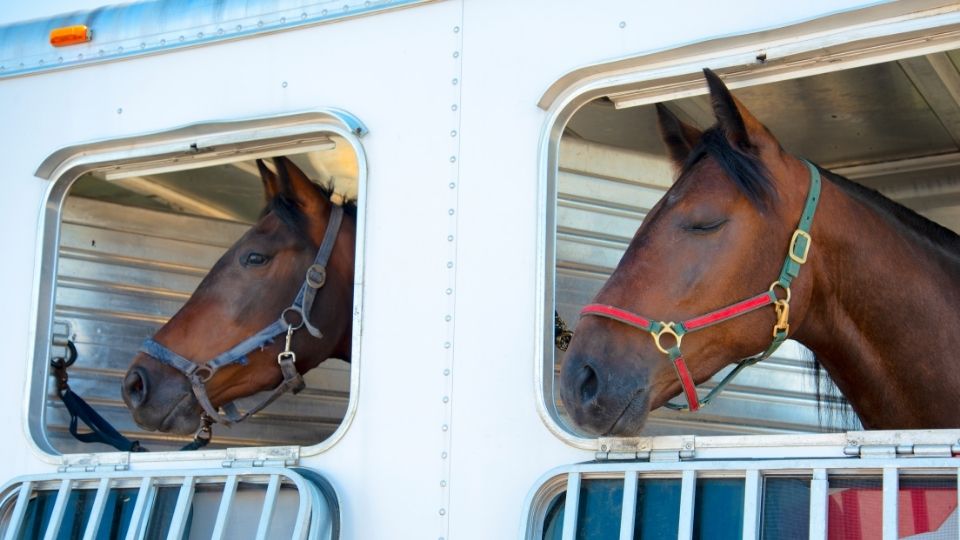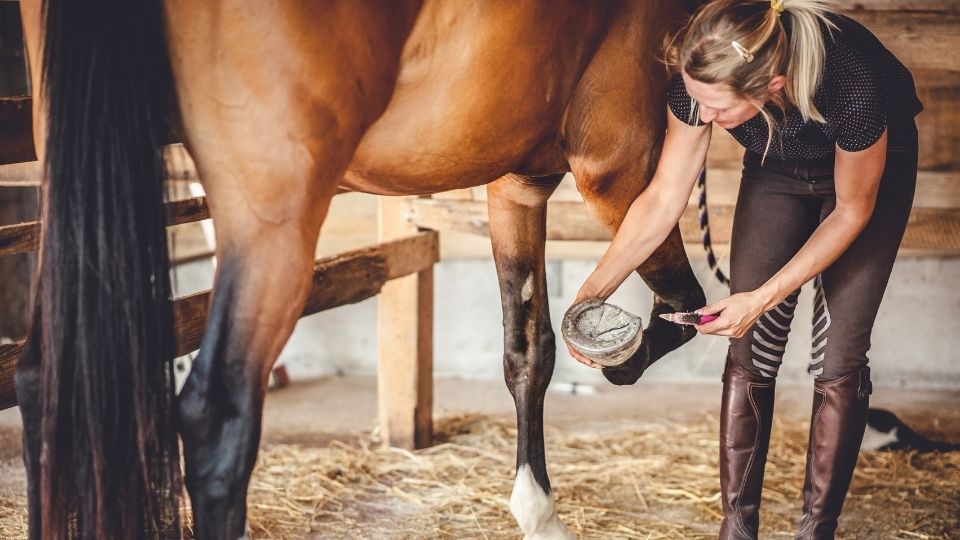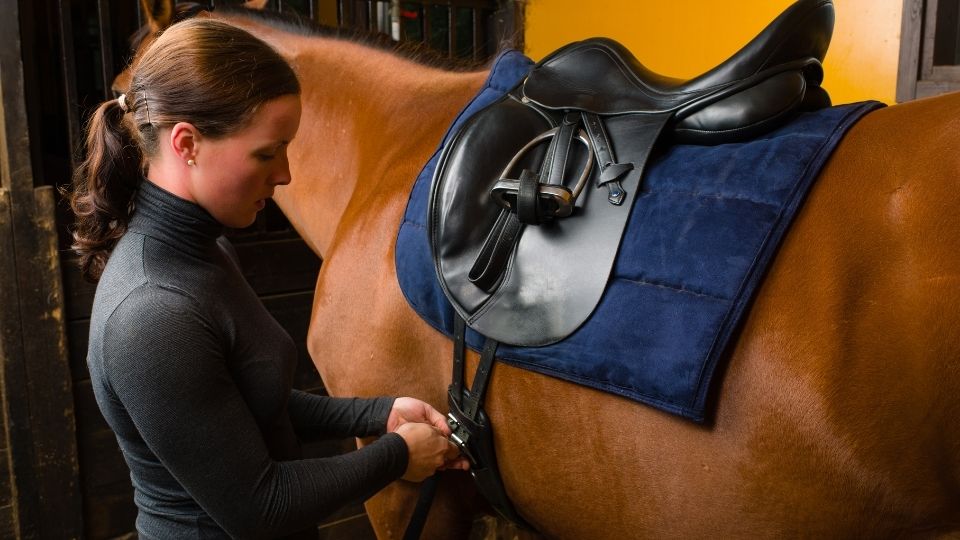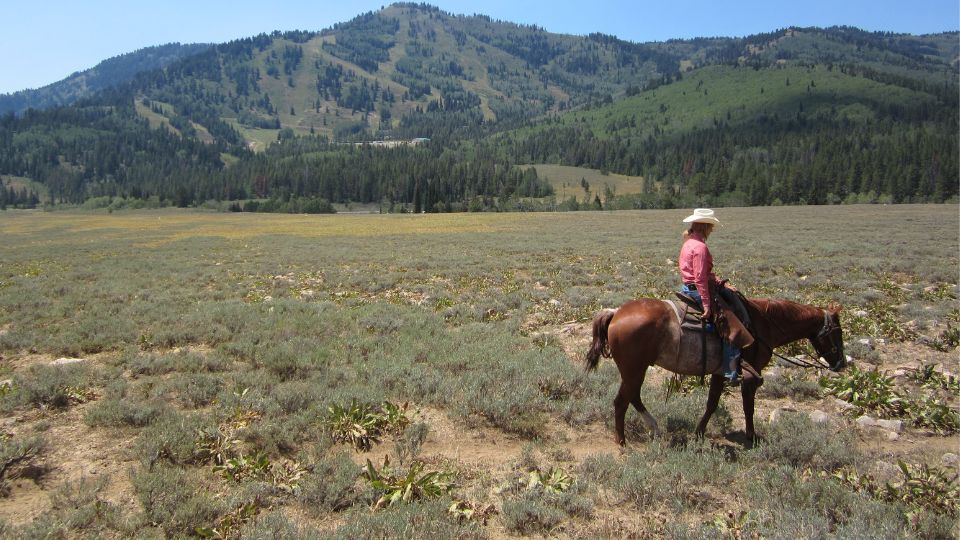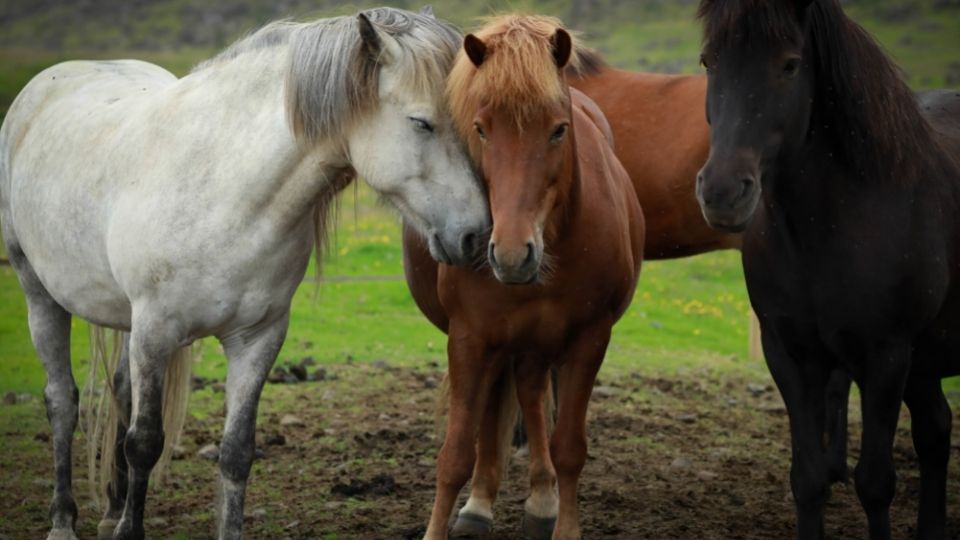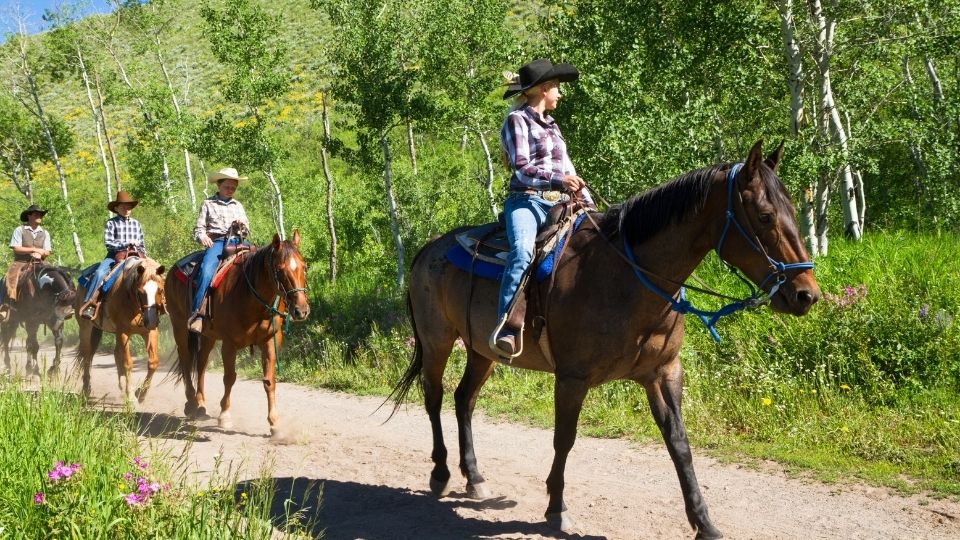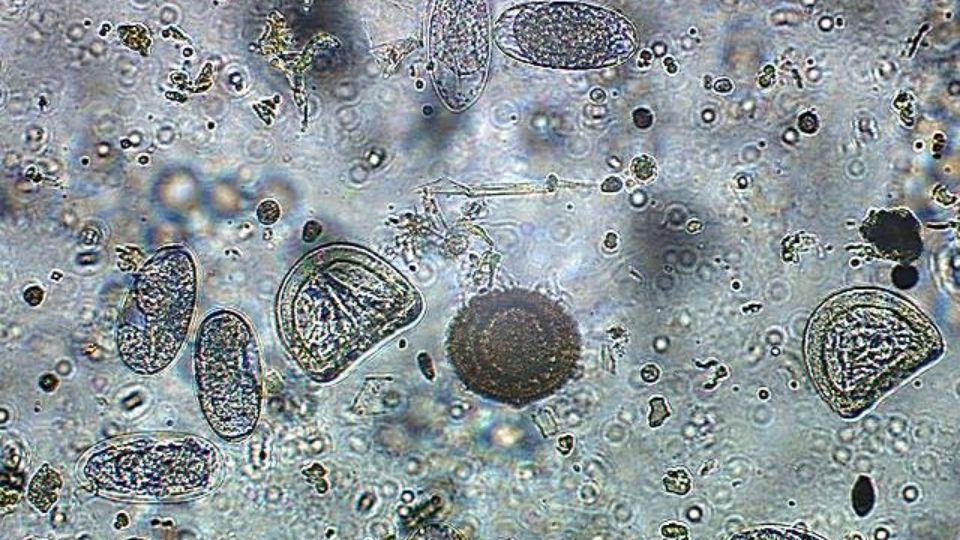Caring for Horses in Cold Weather

Introduction
During dark winter months, we often start to worry about our horses being outside in the cold. How do they stay warm? Horses adapt very well to colder weather. During the fall months, as temperatures cool gradually, horses begin to add additional fat and start to grow a longer hair coat. Both the additional fat and the long hair coat act as insulators to preserve body heat. Given the chance to acclimate properly, horses will often choose to be outside during winter and are often better off outdoors.
The thermoneutral zone (TNZ) for horses is defined as the range of temperature in which the horse maintains its body temperature with little to no additional energy expenditure. The lower critical temperature (LCT) is the temperature below which the horse must increase metabolic heat to maintain normal body temperature.1The TNZ is influenced by the temperatures that the horse has become acclimated to. Horses have the ability to fully acclimate to new temperatures in about 21 days. There is a wide range of the LCT in adult horses. For example, horses in mild climates have a LCT of 40°F while horses accustomed to extreme cold have a LCT of 5°F. For most horses in good body condition, the critical temperature is around 40°F with a summer coat and 18°F with a winter coat.1 Horses that are young, growing, or pregnant have a LCT of 40°F. If a horse can stay dry, it can stay outside in very cold temperatures with no adverse health problems. However, when temperatures drop below the LCT of around 18°F, horses need to produce more internal heat to stay warm. Horses do this by consuming more calories in their diet.
Normal Energy Requirements
Horses have differing digestible energy (DE) requirements depending on the stage of life they are in, their size, and the different workloads they perform. Table 1 indicates the different energy requirements of horses at temperatures within the TNZ.2
Table 1. Normal Energy Requirements for Horses
| Horse | Daily Digestible Energy Requirement. (Mcal) |
|---|---|
| Adult 1,100 lbs. maintenance | 16.65 |
| Adult 1,100 lbs. light work | 19.98 |
| Adult 1,100 lbs. heavy work | 26.64 |
| Pregnant mare 7 months of gestation | 17.89 |
| Lactating mare 4th month of lactation | 29.44 |
| Weanling 7 months old 520 lbs. | 16.40 |
| Yearling 850 lbs. | 19.25 |
Forages, such as grass and hay, form the basis of most horses diets. Healthy horses should consume between 1.5–3% of their body weight in dry matter (DM) daily. Dry matter refers to material remaining after the removal of water. It reflects the amount of moisture in feeds. For an 1,100-lb. horse that means feeding 16.5-33 lbs. of DM. For a 520-lb. weanling that means feeding 7.8-15.6 lbs. of DM. Most of the dry matter should consist of a good quality forage such as grass, grass hay, or alfalfa hay. It should also be noted that not all hays contain the same amount of DE. Many factors, such as moisture content, time of harvest, and age of hay, all contribute to how much nutritional value the hay contains. Tables 2 and 3 outline the DE contained in different good quality forages and concentrates. As seen in the Tables 1-3, most of the time a horse’s energy requirement can be provided through a good quality forage without adding concentrates. However, it should be noted that even in warm weather young growing horses and lactating mares may not be able to consume enough DE with forage alone. They will need to be supplemented with more energy rich feedstuffs. Remember that different feeding practices can lead to feed wasting. Sometimes up to 25% of the feed will be dropped on the ground and mixed with mud or manure making it unavailable to eat.
Cold Weather Energy Requirements
Cold weather increases the energy requirement by 0.00082 Mcal DE/kg body weight for each degree Celsius drop below the LCT of the animal.3 For an 1,100 lb. horse that is 0.23 Mcal energy requirement increase for each degree Fahrenheit drop below the f LCT. Another way to look at it, during cold weather, adult horses require about 15-20% more feed for each 10°F the outside temperature falls below LCT in order to maintain their normal body temperature.2 For young and growing horses that requirement can be up to 33% more feed.5 Table 4 provides some different feeding strategies.
Table 2. Digestible Energy of Forages
| Forage (Hay) 20 lbs. (9.1 kg) | Digestible Energy (Mcal) |
|---|---|
| Grass Hay - Cool Season - Mature | 15.57 |
| Grass Hay – Cool Season - Immature | 18.04 |
| Alfalfa Hay | 17.95 |
Table 3. Digestible Energy of Grains
| Concentrate (Grain) 1 lb. (0.45 kg) | Digestible Energy (Mcal) |
|---|---|
| Whole Oats | 1.35 |
| Rolled Barley | 1.52 |
| Cracked Corn | 1.55 |
| Beet Pulp | 1.12 |
| Rice Bran | 1.38 |
Table 4. Energy and Diet Requirement Changes for an 1,100 lb. Adult Horse
| Outside Temperature | Energy Requirement (Mcal) | Lbs. of Alfalfa hay |
|---|---|---|
| 30°F | 16.65 | 19 lbs. |
| 20°F (LCT) | 16.65 | 19 lbs. |
| 10°F | 18.95 | 21.5 lbs. |
| 0°F | 21.25 | 24 lbs. |
When feeding an adult horse, most of the additional energy requirements can be met by simply supplying a few more pounds of good quality forage. Forages, which are digested by microbes located in the cecum and large intestine, produce more heat than concentrate mixes, which are digested by enzymes in the small intestine. Although concentrates contain more total DE per pound than hay, the amount of actual heat given off by the digestion process is significantly less. Thus, the best way to increase internal body heat while maintaining a safer, more consistent energy intake is to increase the intake of forages. However, young growing horses require a more energy dense diet. They simply cannot consume enough forage to meet the required energy needs. This becomes even more important when cold weather makes addition energy demands. If the necessary amount of energy is not available, growth will be stunted, and health is compromised. Sometimes, simply adding oats is not enough. Commercially produced diets are available that contain concentrates and fats that provide the needed energy. Care should be taken to use a reputable feed source and feed according to directions given. Many times, care takers will provide free choice forage for young growing horses and supplement with an acceptable amount of concentrate and fats. This ensures that the young growing horse’s energy requirements are being met.
Water Requirements
Good quality, palatable water remains to be very important for horses’ diets even in cold weather. Adult horses will normally drink between 5-8 gallons of water per day. However, horses eating hay require more water than horses out on pasture. Hay is generally less than 15% moisture as compared to pasture that can be 60-80% moisture. As the amount of hay horses are fed increases for cold weather, the amount of water they need also increases to 9-10 gallons per day. Cold water causes horses to drink less. During winter months, drinking water temperatures should be kept between 45 to 60°F to maximize consumption.4 Water heaters are a good way to keep water from being frozen or too cold. If a water heater is not available, make sure to check water sources twice daily and remove ice to ensure adequate availability. Colic is a constant fear for horse owners. Impaction colic can be caused by eating hay and not consuming enough water.
Salt Requirements
Salt requirements remain constant even through winter. On average, horses should consume 1 to 2 ounces of salt per day. Free choice salt blocks are a good way to provide this important nutrient. Top dressing salt can also be utilized. Feeding salt will also increase a horse’s water consumption.
Shelter
Horses can tolerate the cold pretty well if they can stay dry and get out of the wind. On cold days horses still like to be outside if the sun is shining. When it is windy or storming horses do like to be in a shelter. Horses like to be housed with other horses particularly in cold weather, assuming that the horses get along well together and there is adequate space. During bad weather horses will often turn their tails to wind, lower their heads, and stand close together to preserve body heat. Shelter becomes very important when temperatures are extremely cold with increased wind and moisture.
Blanketing
Most horses should not require a horse blanket in the winter if they are allowed to acclimate normally. The long winter hair coat acts as insulation. If the hair coat becomes wet or muddy this can reduce its insulating value. Keeping the horse dry and free of mud is important for them to stay warm. Snow does not seem to be a problem. Rain, ice and/or freezing rain is much more problematic to keeping horses warm. Horses that require a blanket may include the following:4
- Horses that do not develop a good winterhair coat
- Horses that are underweight
- Horses with no additional shelter withtemperatures below 0°F.
- Horses that have not been acclimated to the cold
- Horses that have been body clipped
- Horses that are very young or very old
If you decide to blanket your horse, care must be taken to make sure the blanket fits properly and remember to remove the blanket periodically to evaluate the horse. Fungus can begin to grow on the skin of the horse in moist, warm conditions. Also, weight loss cannot be seen beneath the blanket.
Summary
Horses have lived in cold climates for many years. Most of the time they do just fine if they have the things they need:
- Good nutrition, with additional energy incolder weather
- Plenty of warm, palatable water
- Shelter from wind and moisture withextreme cold
- Blankets if necessary
With a little bit of extra care, we can provide a suitable environment for our horses to live outside comfortable and healthy.
References
- 1Kentucky Equine Research. Lower Critical Temperature for Horses. 2011. Retrieved from http://www.equinews.com/article/lower-critical-temperature-for-horses
- 2NRC. Nutrient Requirements of Horses (6th Ed). National Academy Press. 2007 http://nrc88.nas.edu/nrh/
- 3Merck Veterinary Manual: Nutritional Requirements of Horses. Retrieved from http://www.merckvetmanual.com/management-and-nutrition/nutrition-horses/nutritional-requirements-of-horses
- 4Hathaway, M, Martinson, K. Equine Winter Care. University of Minnesota Extension. 2017 https://www.extension.umn.edu/agriculture/horse/care/equine-winter-care/
- 5Cymbaluk, NF, Christison, GI. Environmental effects on thermoregulation and nutrition of horses. Vet. Clinics of North America: Equine Practice. 1990; 6(2): 355.
Published January 2018
Utah State University Extension
Peer-reviewed fact sheet
Authors
Karl H. Hoopes, DVM, USU Equine Extension Specialist
Related Research



